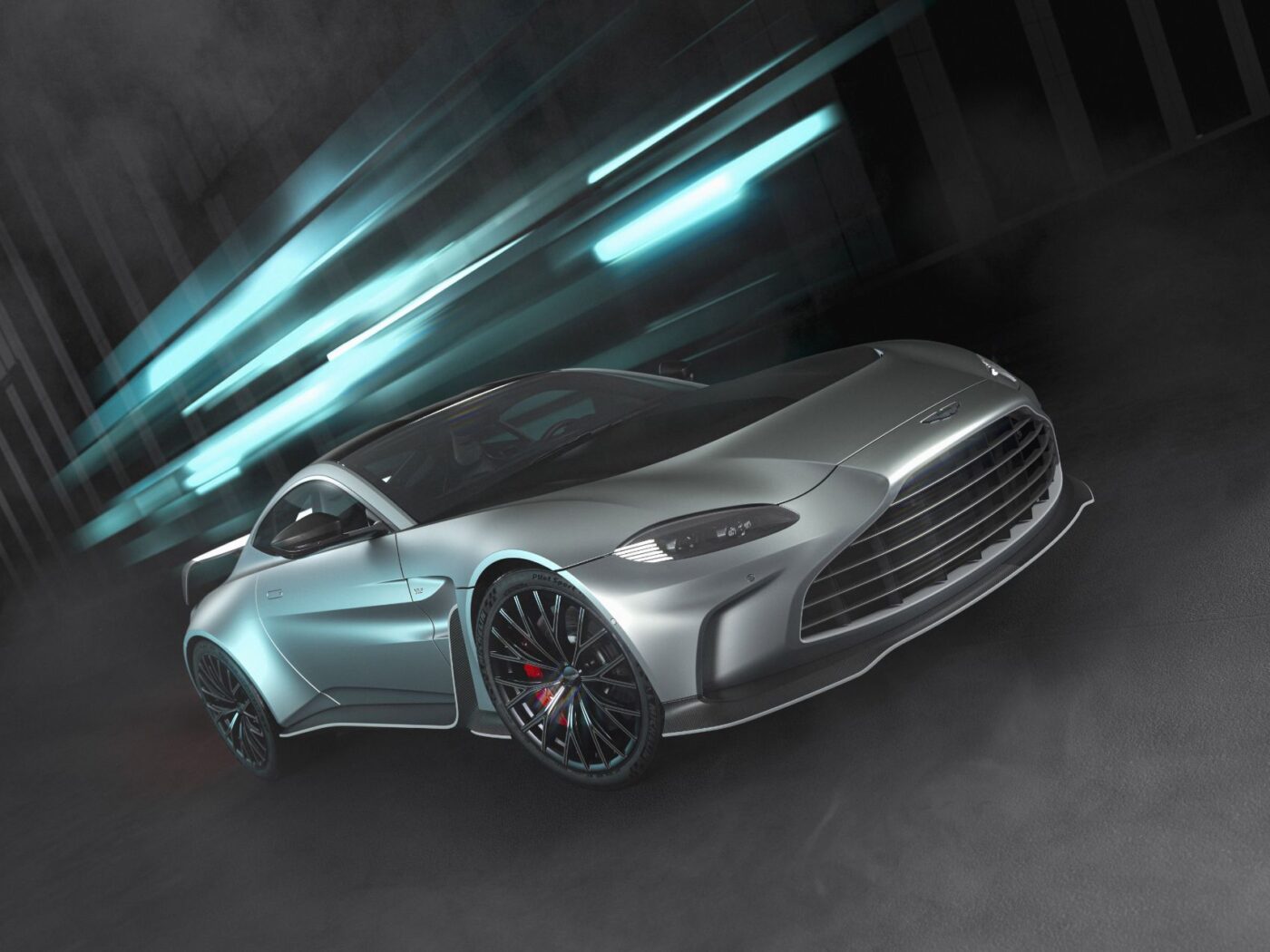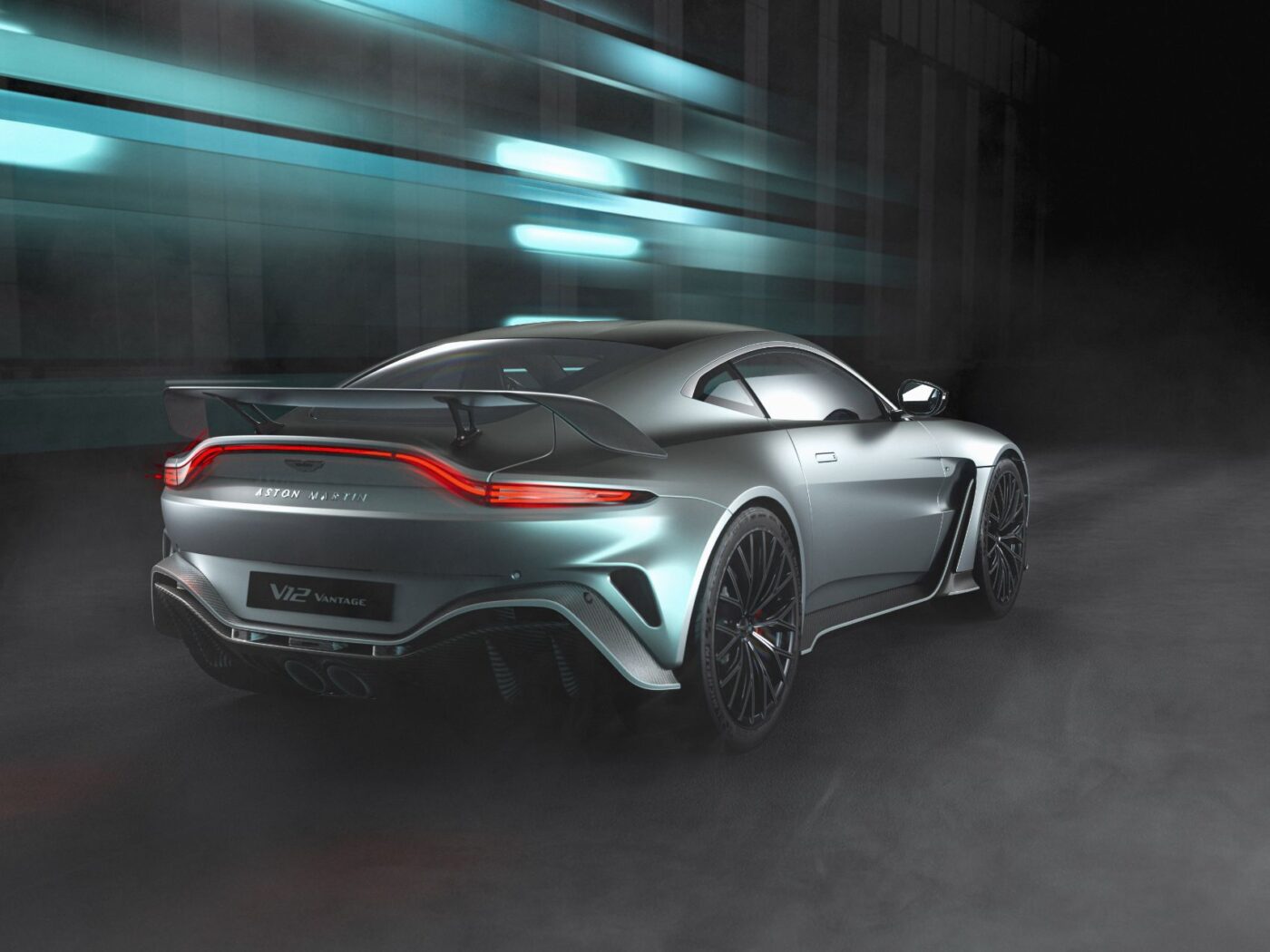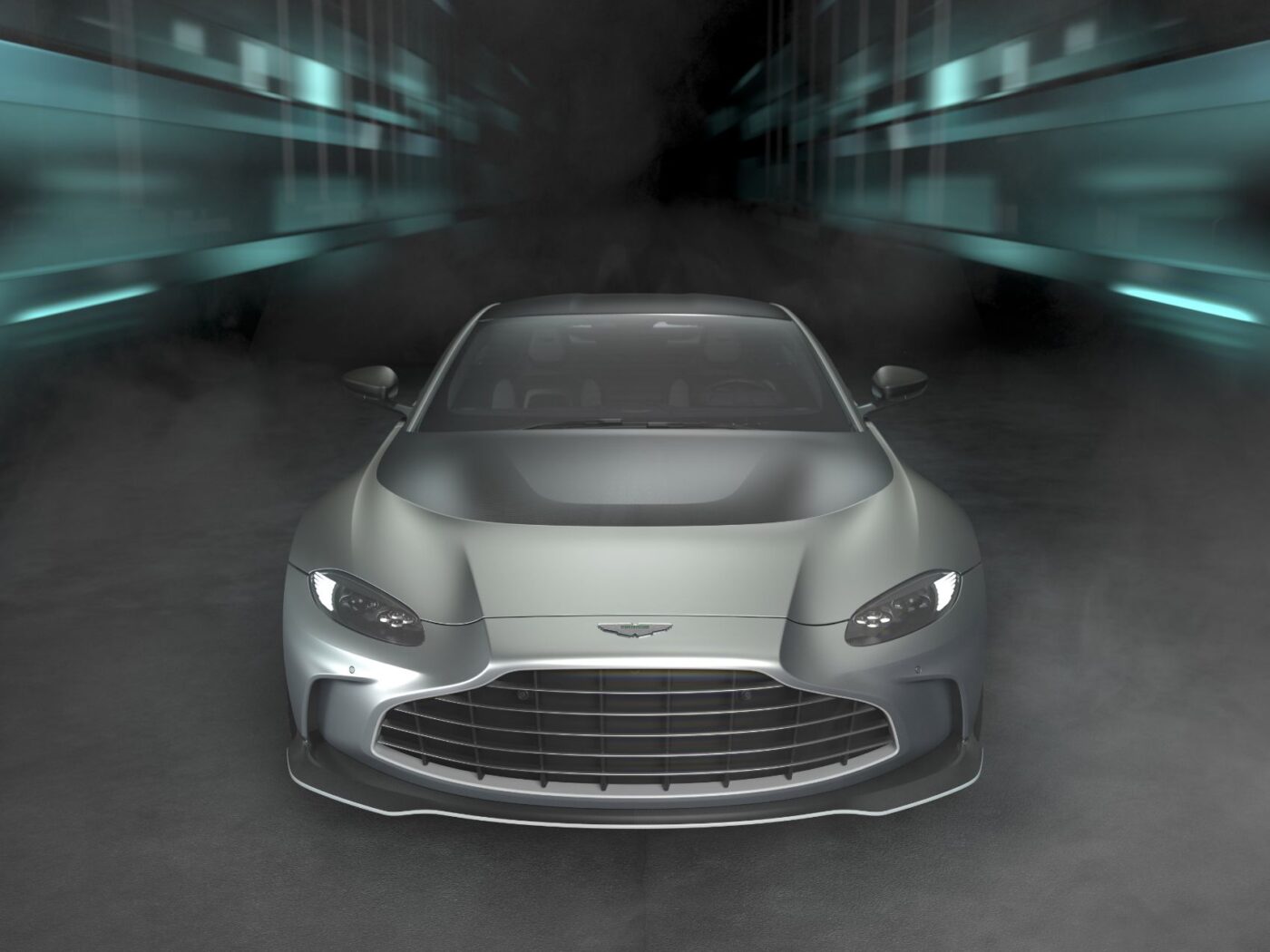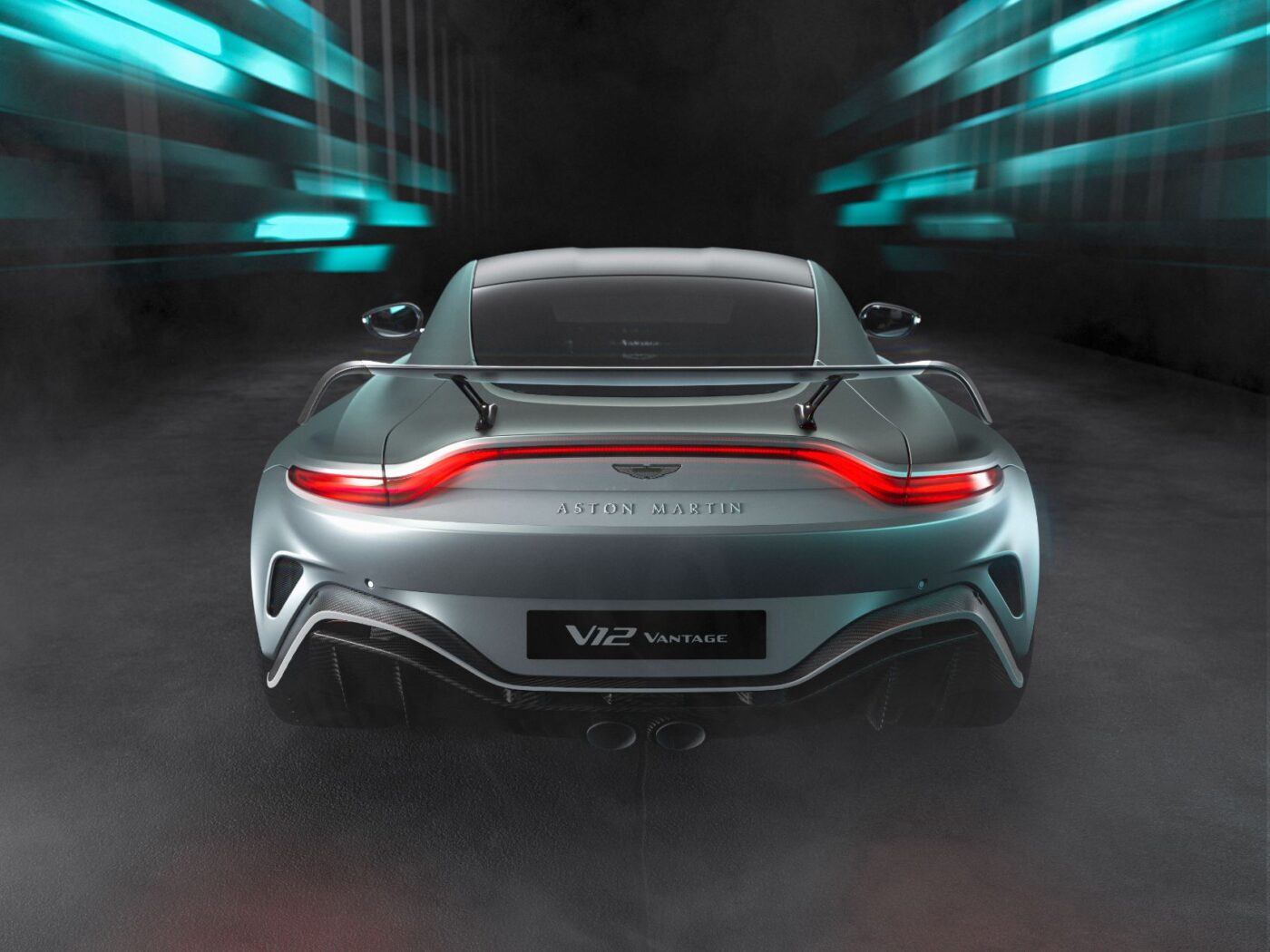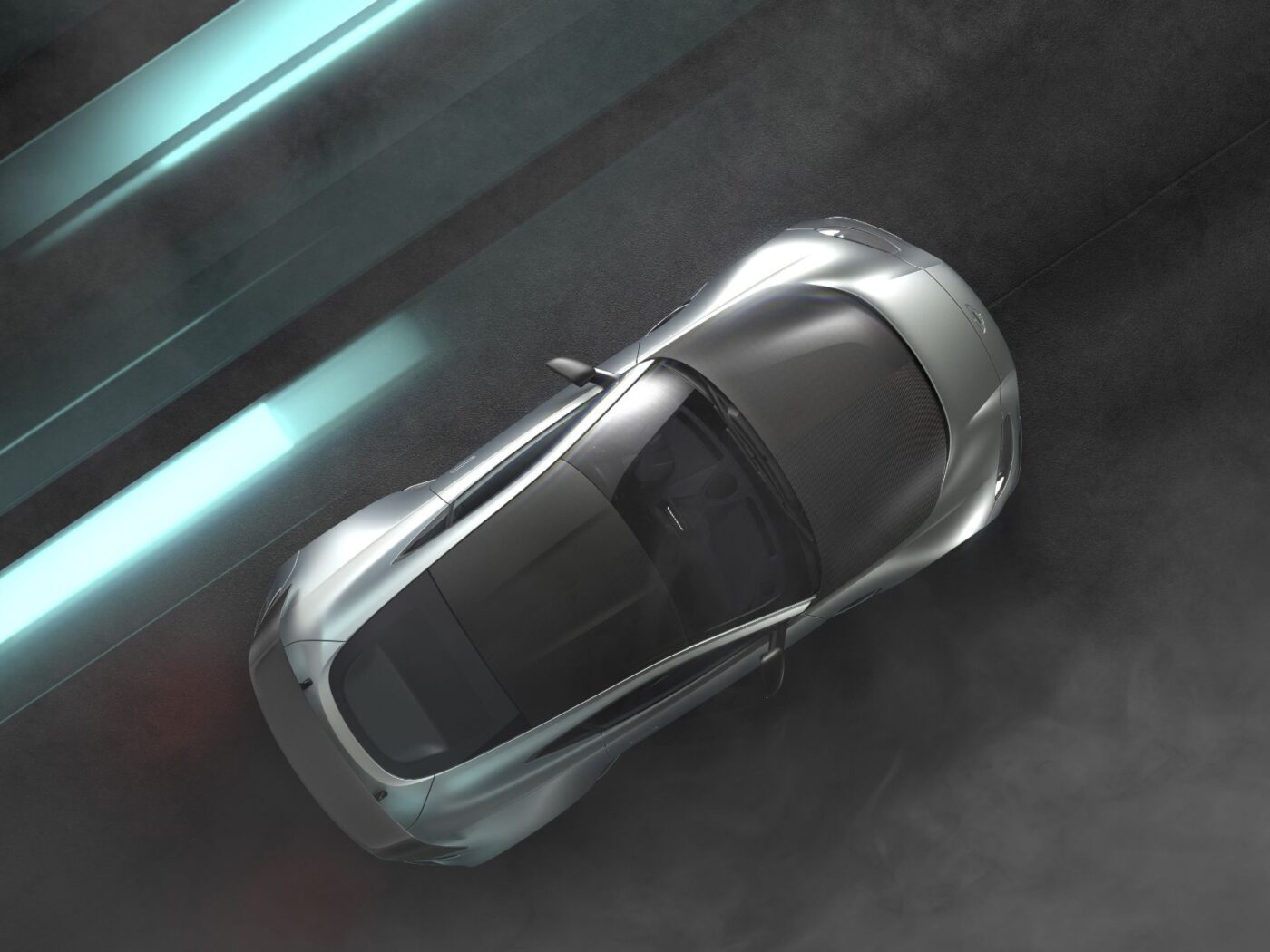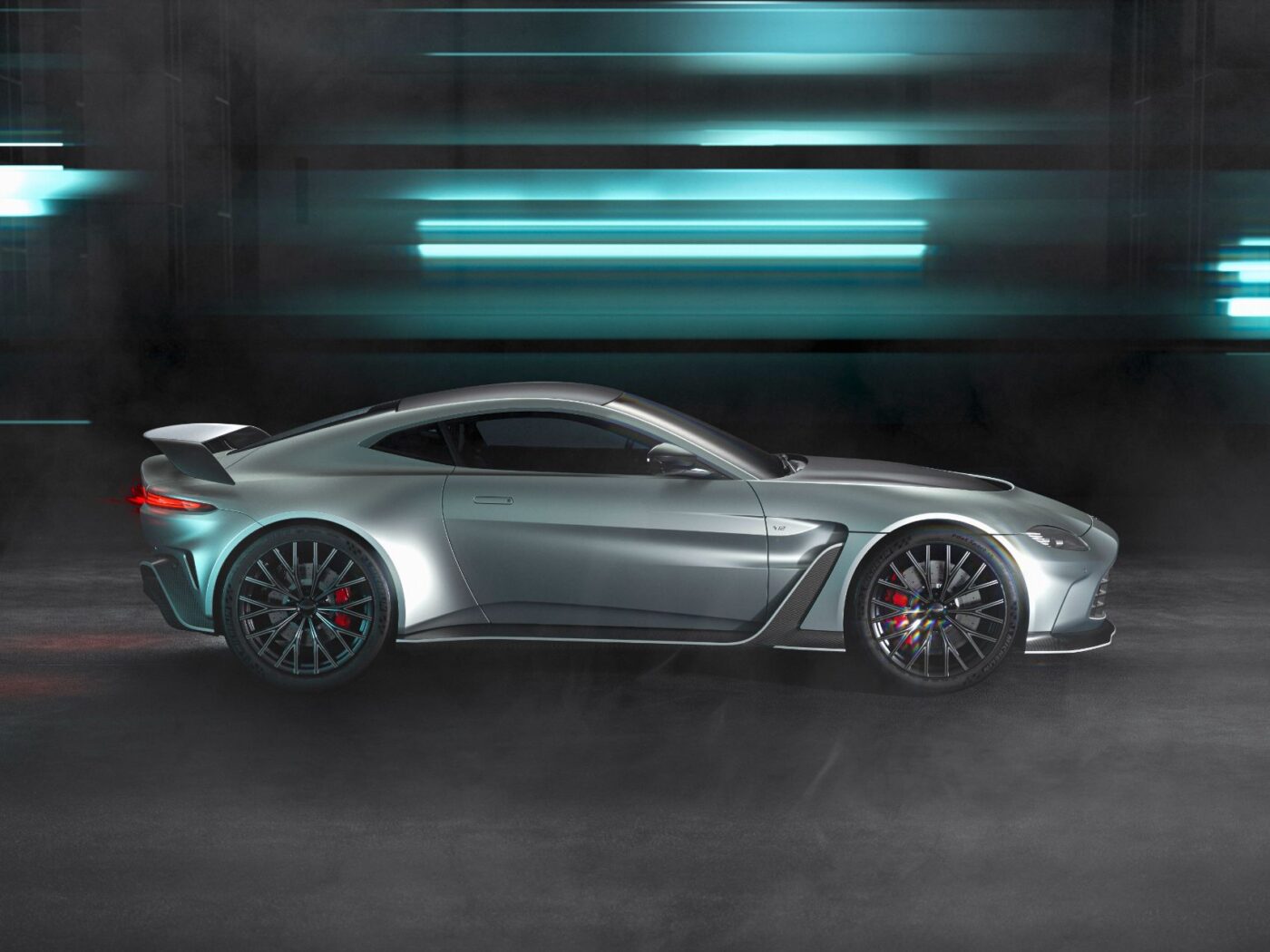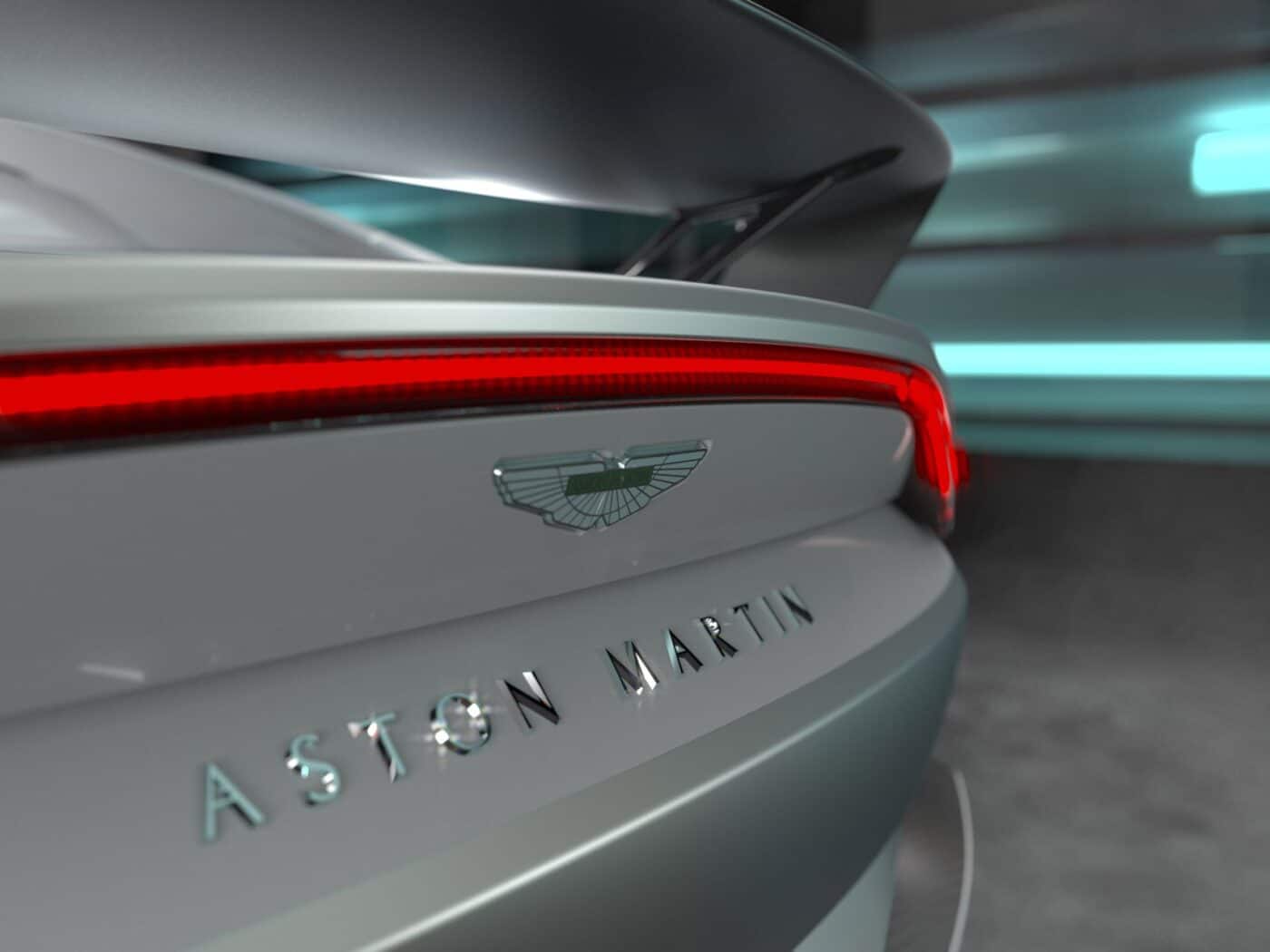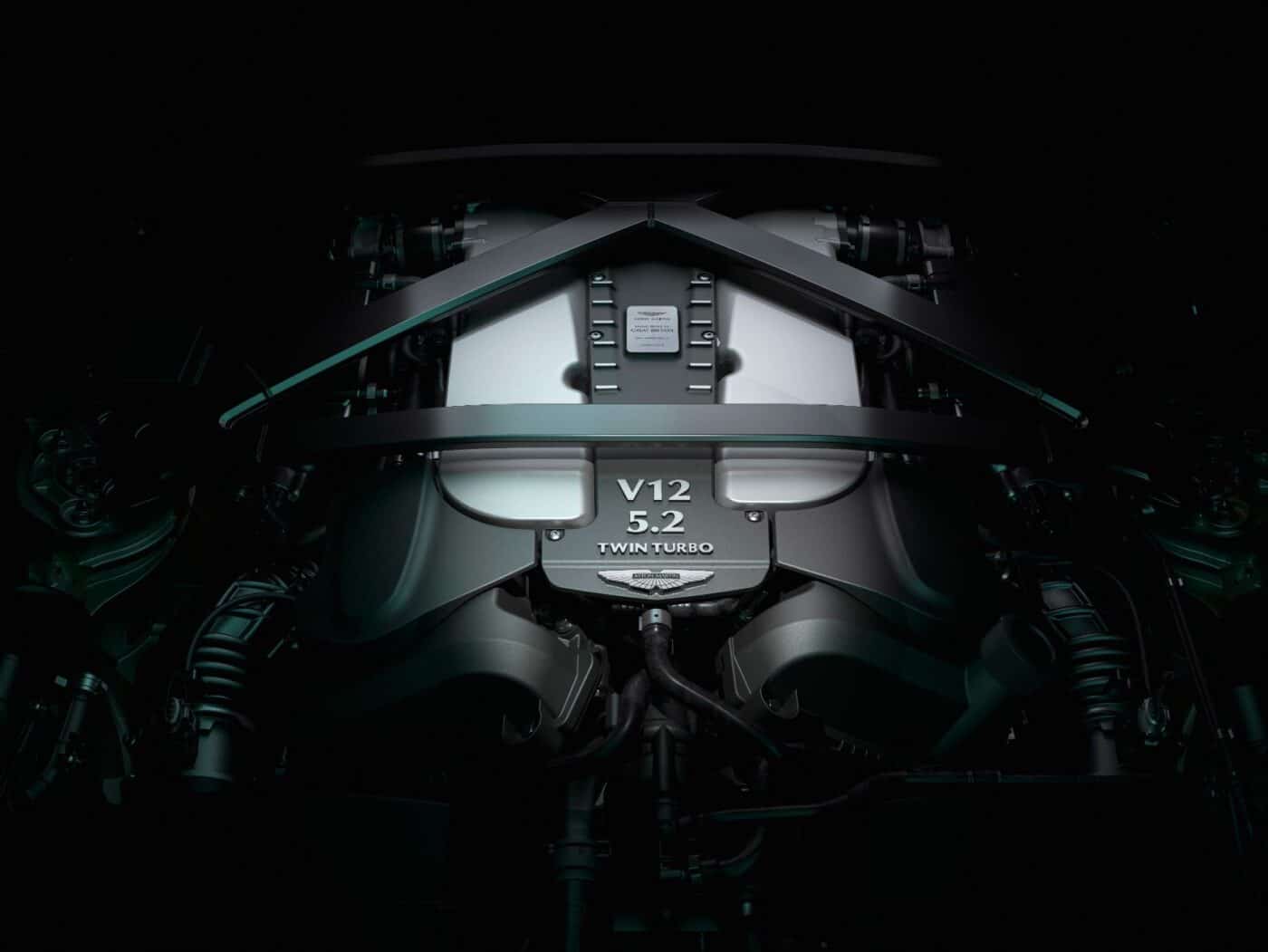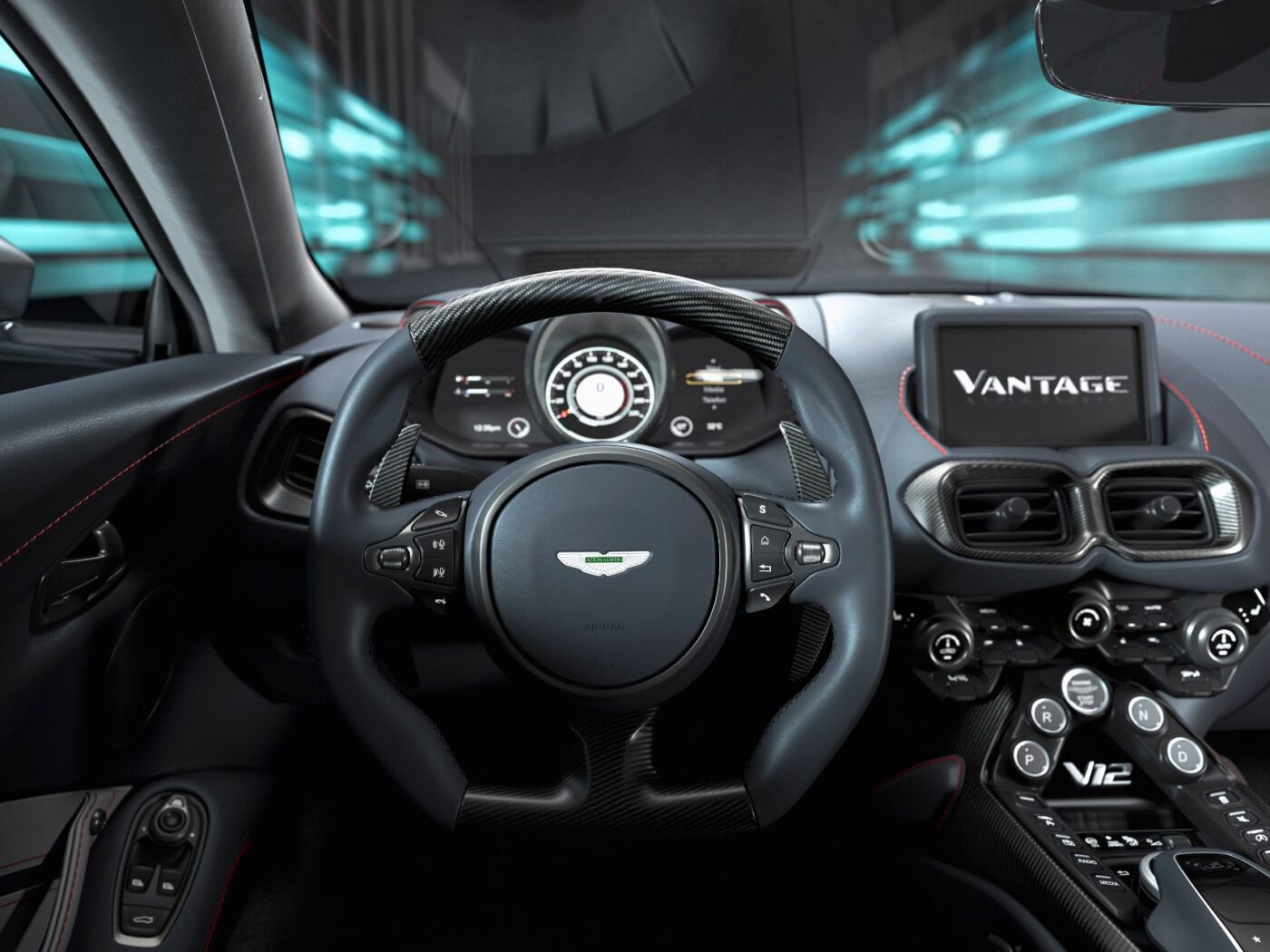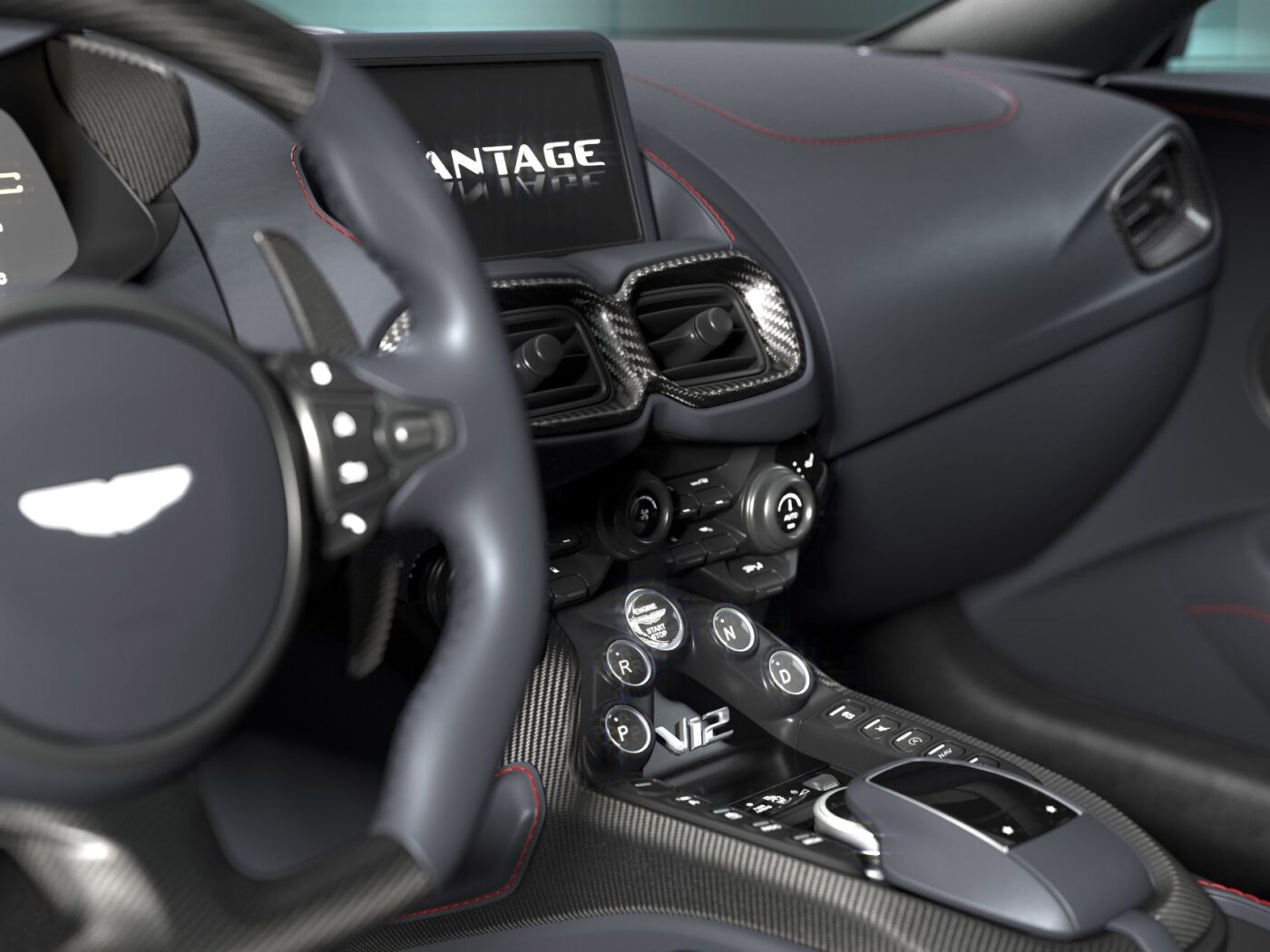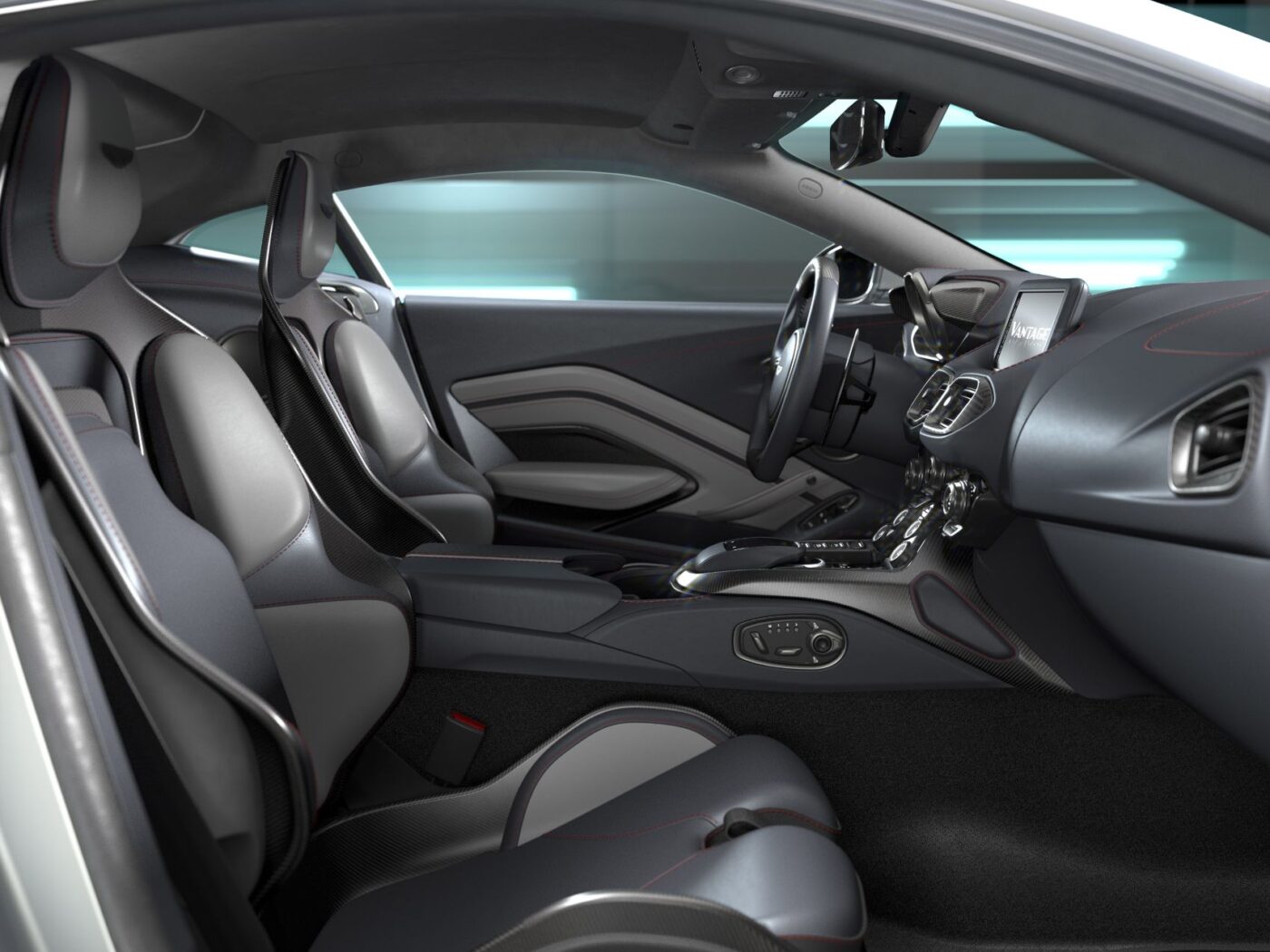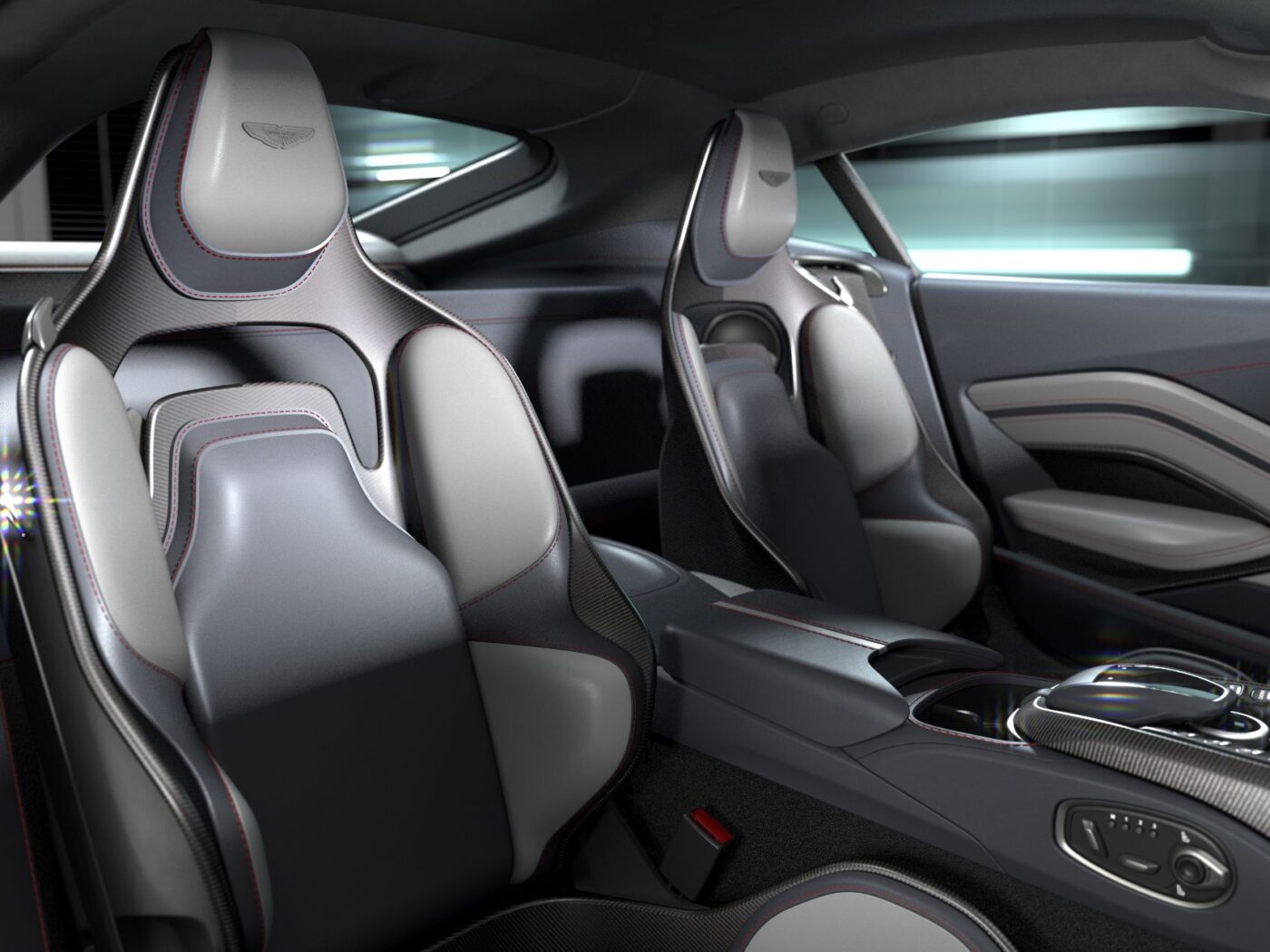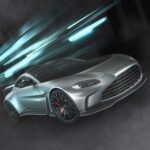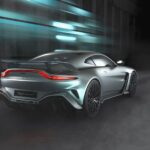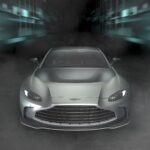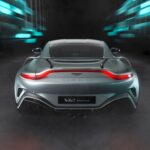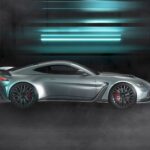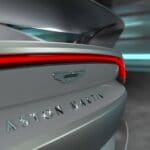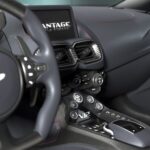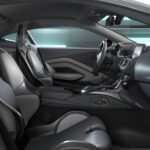Climate change is wreaking havoc on the environment and fast-tracking the V12 engine to the extinction list. Not too long ago, BMW unveiled the last 7 Series with a V12 engine, the M760i xDrive. Now, iconic British luxury automaker Aston Martin has introduced the last V12 Vantage.
Aston Martin V12 Vantage: All About Power
To ensure we’ll miss it terribly when it’s gone, Aston Martin designed the V12 Vantage as the fairest and fastest of the lot. It has tons of power, making it the most potent Vantage to leave Gaydon’s factory gates. Previous variants of the V12 Vantage have always followed the same recipe to success: shoehorn Aston’s most potent V12 engine into its smallest sports car. For the final V12 Vantage, Aston did just that and more.
“Every sportscar brand has a hero car, and for Aston Martin, in more recent years, that car has been the V12 Vantage,” said Tobias Moers, CEO of Aston Martin. “Now it is time to bring this bloodline to a close, fittingly with the most spectacular example yet.”
Under the hood is a 5.2-liter twin-turbocharged V12 engine pumping out 690 horsepower and 555 lb-ft. torque. Not only does max torque arrive from 1,800 to 6,000 rpm, but Aston Martin promises “an intoxicating combination of magnificent low and mid-range muscularity with searing top-end power.” In other words, it’s an incredibly torquey motor capable of some high-revving action, just what we expect from an Aston Martin V12.
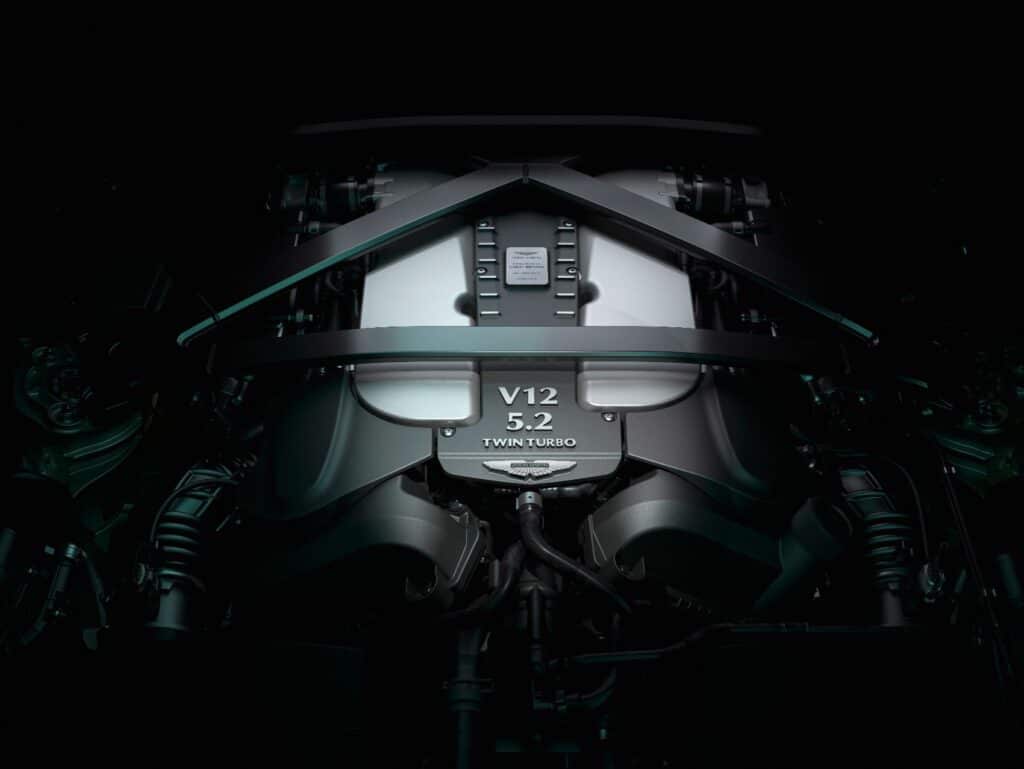
How Fast Is The Aston Martin V12 Vantage?
The final edition V12 Vantage rushes from zero to 60 mph in 3.4 seconds and has a 200 mph top speed, blindingly quick for a high-performance grand tourer. Engine power goes strictly to the rear wheels via a ZF eight-speed automatic with a mechanical limited-slip differential. Aston Martin also said the recalibrated gearbox offers quicker shifts and more accurate shift points.
Furthermore, the new V12 Vantage’s propensity for speed has something to do with weight (or the lack of it). Thanks to lightweight carbon fiber panels like the clamshell hood, redesigned front bumper, front fenders, side sills, rear bumper, and decklid, the final V12 Vantage produces a power-to-weight ratio of 384 horsepower-per-ton, 20 percent better than a V8 Vantage.
Part of the weight-saving effort includes a new lighter battery and a bespoke, all-aluminum center-mounted twin-exhaust system, the latter tipping the scales at about 16 lbs. (7.2 kg) compared to the exhaust system of a V8 Vantage.
Luxury & Performance Underpinnings
Aston Martin engineers also did their homework in making the final edition V12 Vantage not wallow at the first sight of a curve. It has new springs with 50 percent (front) and 40 percent (rear) better spring rates. Also new are 41 percent softer rear anti-roll bars and a secondary “tender spring” for the rear to deliver long-distance touring comfort.
In addition, the chassis has new front and rear shear panels, updated fuel tank bracing, and a revised rear suspension strut tower brace for added body stiffness, a necessary feature in making a car like a Vantage ride and handle better. The changes have given the V12 Vantage an eight-percent stiffer body and 6.7-percent better lateral stiffness than a V8 Vantage coupe.
Meanwhile, the anchors are carbon-ceramic with 410mm x 38mm discs and six-piston calipers in the front and 360mm x 32mm rear discs with four-piston calipers. The ceramic brakes are 51 lbs. (23 kg) lighter than steel and are more resistant to fade when the going gets tough.
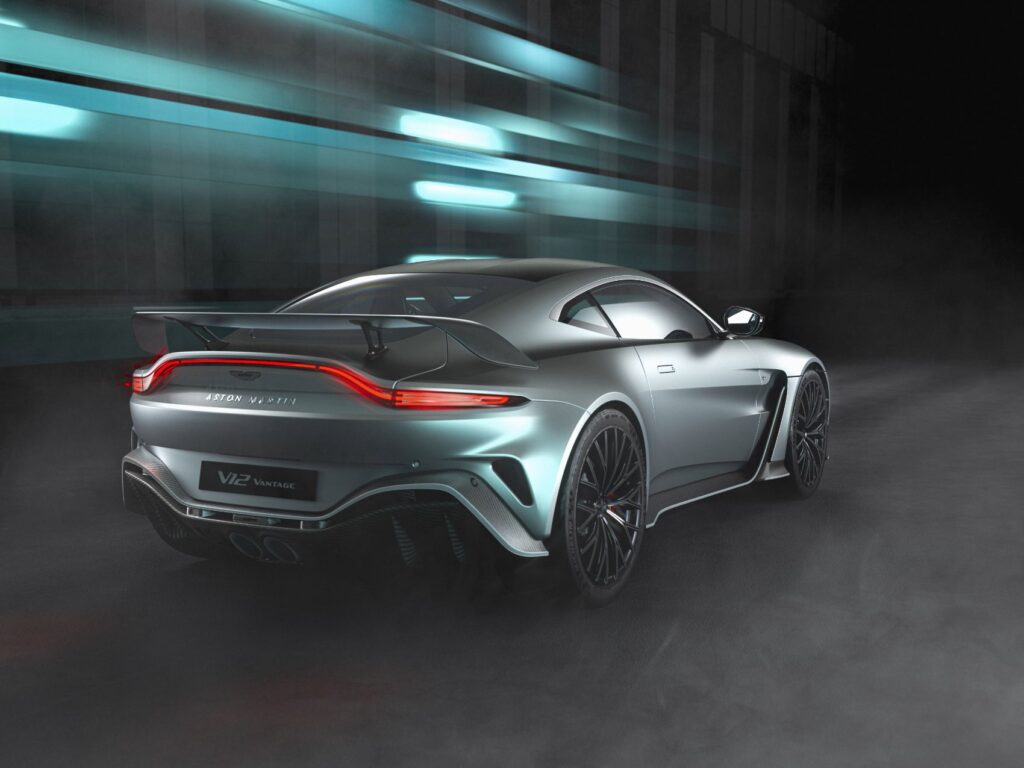
Beauty Is On The Agenda
The current-gen Aston Martin Vantage first debuted in 2019, but it remains one of the most beautiful cars you’ll see on the road. The final V12 Vantage has a few subtle changes to make it look more captivating with an aero-optimized widebody kit, wide enough to accommodate 21-inch rims wrapped in sticky Michelin Pilot 4S high-performance rubber.
The final Aston Martin V12 Vantage also has a new front bumper, a full-width front splitter, a 25 percent larger front grille, a unique “horse shoe” vent on the hood, and a new rear bumper with an integrated diffuser.
It also gets a rather attention-grabbing rear wing that produces 450 lbs. of downforce (204 kg) at full chat. On a more pleasant note, Aston Martin offers the option of deleting that ungainly rear spoiler, and we’ll choose that option in a heartbeat if our money is on the table.
Custom Interior
We’re still talking about an Aston Martin, so luxury remains part of the plan. The V12 Vantage has sporty seats garbed in full semi-aniline leather, but optional carbon-fiber seats are available if you wish to save 16 lbs. (7.3 kg) more. Aston Martin’s Q bespoke department offers a bewildering array of materials, finishes, quilting, and stitching to make a one-off Vantage to your liking.
Aston Martin V12 Vantage Availability
Aston Martin is only making 333 examples of the final edition V12 Vantage, and all were pre-sold before the car’s official reveal. Each one went for around £2,650,000 or a whopping $3.5 million before taxes.
Alvin Reyes is an Automoblog feature columnist and an expert in sports and performance cars. He studied civil aviation, aeronautics, and accountancy in his younger years and is still very much smitten to his former Lancer GSR and Galant SS. He also likes fried chicken, music, and herbal medicine.
Photos & Source: Aston Martin The Americas.

